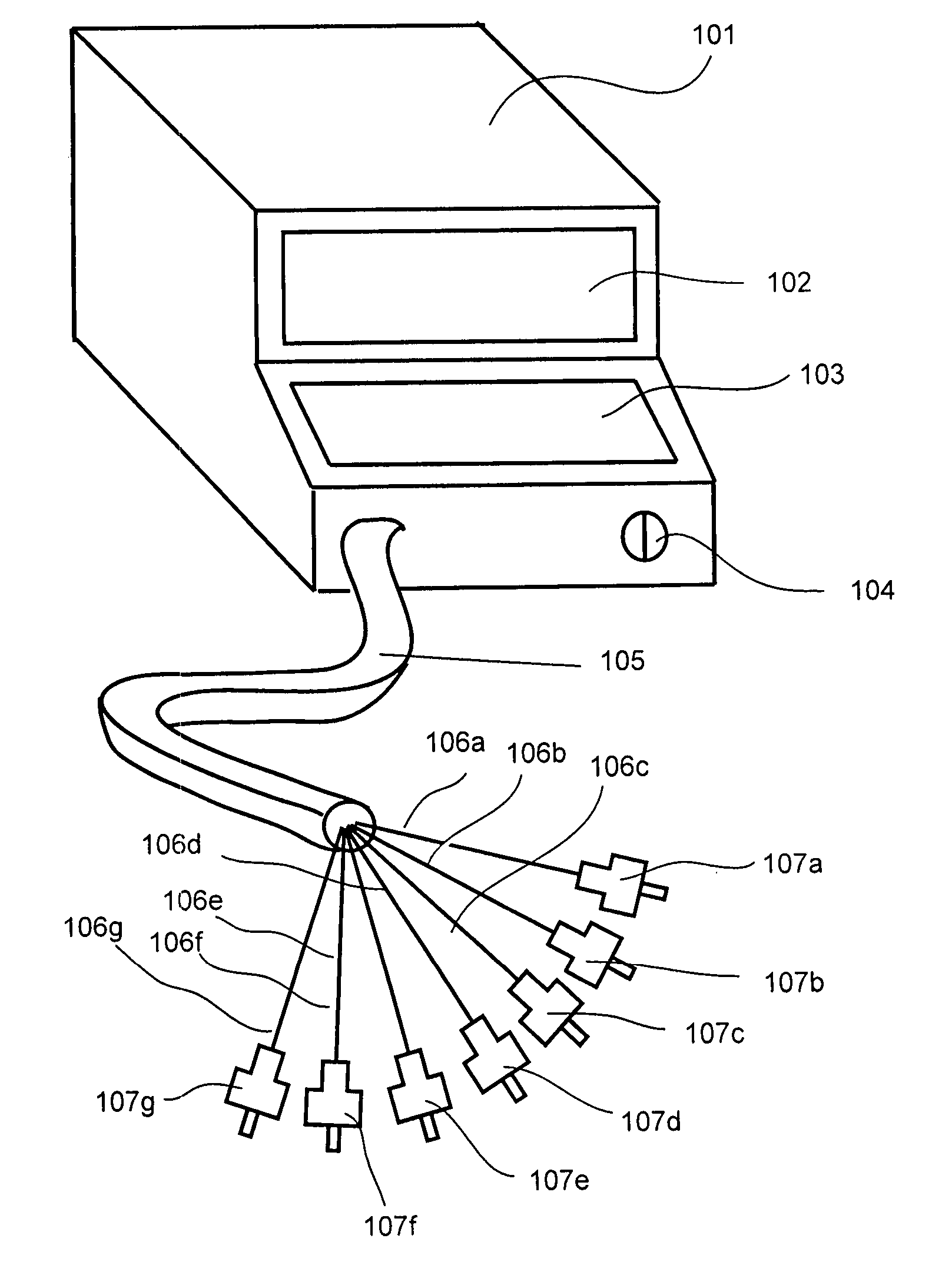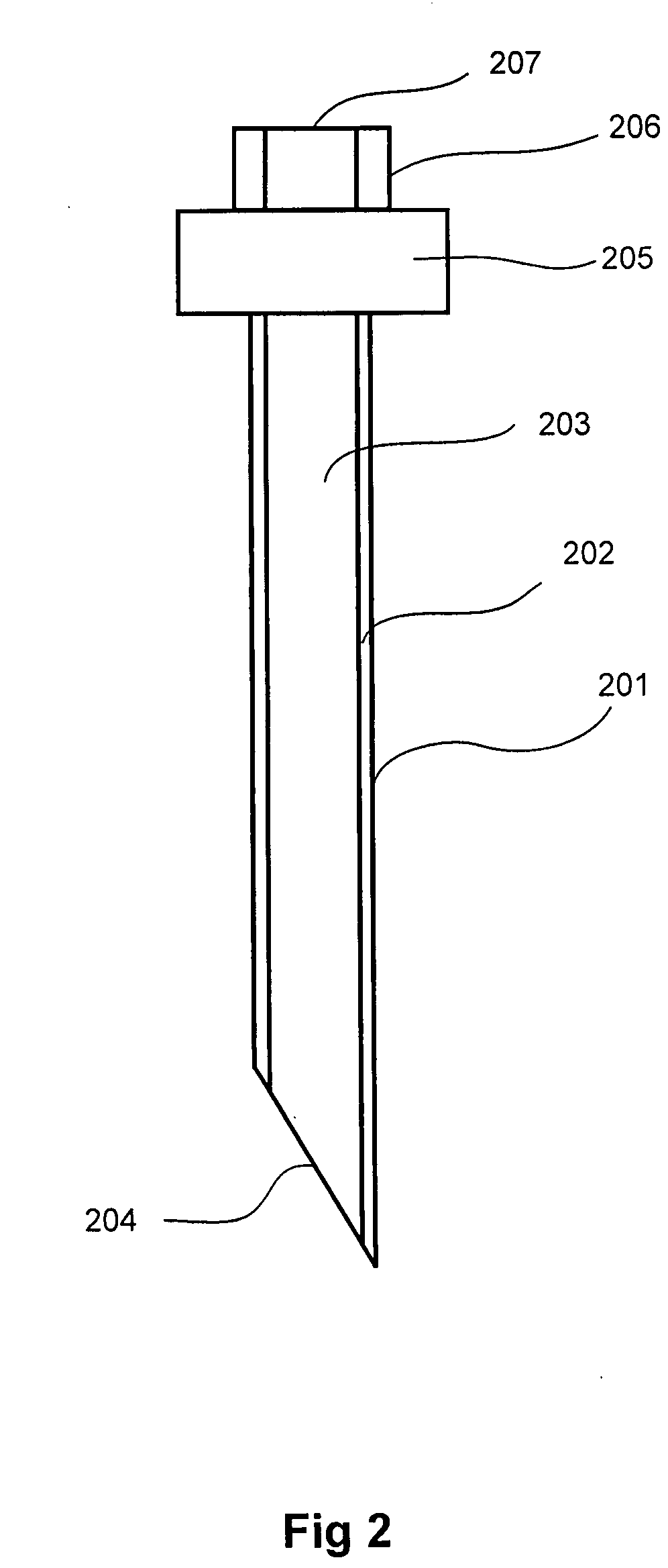Cancer treatment using low energy lasers
- Summary
- Abstract
- Description
- Claims
- Application Information
AI Technical Summary
Benefits of technology
Problems solved by technology
Method used
Image
Examples
Embodiment Construction
[0017] This invention concerns use of low energy lasers in conjunction with biological dyes, stains or pigments to destroy cancerous tumors when identified and located. Currently used methods for identification of cancerous tumors include laser scanning, magnetic resonance imaging (MRI), x-ray imaging, CT scans, and other means. Following identification and location of cancerous tumor cells in the body, a biological dye, stain or pigment is attached to the identified tumor cells through injection or special agent. For example, certain dyes can be injected systemically into the bloodstream, with the dye accumulating more efficiently in tumors than in healthy tissues. The accumulated dye is then imaged using X-ray, MRI or ultrasound devices or the like. Once located, the tumor is ablated using a radiant energy delivering device—e.g, a fiber optic device. One benefit of this approach is the dye serves as both the imaging and ablation stain and, further, the only device requiring delive...
PUM
 Login to View More
Login to View More Abstract
Description
Claims
Application Information
 Login to View More
Login to View More - R&D
- Intellectual Property
- Life Sciences
- Materials
- Tech Scout
- Unparalleled Data Quality
- Higher Quality Content
- 60% Fewer Hallucinations
Browse by: Latest US Patents, China's latest patents, Technical Efficacy Thesaurus, Application Domain, Technology Topic, Popular Technical Reports.
© 2025 PatSnap. All rights reserved.Legal|Privacy policy|Modern Slavery Act Transparency Statement|Sitemap|About US| Contact US: help@patsnap.com



